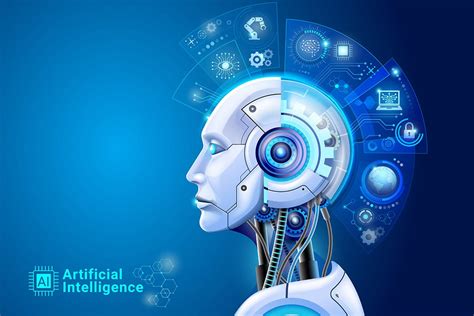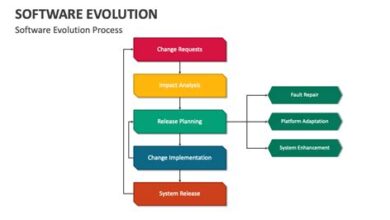The Role of AI in Software Development: Automation and Efficiency

Explore the role of Artificial Intelligence in revolutionizing software development. This blog post delves into AI’s impact on the Software Development Lifecycle, highlighting its power in automating crucial testing processes, leading to faster and more reliable software releases. Discover how AI-driven code analysis enhances code quality by identifying potential bugs and vulnerabilities early on. Furthermore, we provide actionable strategies for implementing AI to boost efficiency across your software development workflows. Learn how to leverage AI tools and techniques to optimize your development process, reduce costs, and deliver higher-quality software products.
Understanding AI’s Impact On Software Development Lifecycle
The integration of Artificial Intelligence (AI) into the Software Development Lifecycle (SDLC) is revolutionizing how software is conceived, developed, and maintained. The Role of AI spans across various stages, offering unprecedented opportunities for automation, efficiency gains, and enhanced quality. AI’s ability to analyze vast datasets, predict potential issues, and automate repetitive tasks is reshaping the landscape of software development.
One of the primary impacts of AI is in the area of requirements gathering and analysis. AI-powered tools can analyze user feedback, market trends, and existing software functionalities to generate comprehensive and accurate requirements. This not only saves time but also reduces the likelihood of errors and omissions that can lead to costly rework later in the development process.
| SDLC Stage | AI Application | Benefits |
|---|---|---|
| Requirements Analysis | AI-driven analytics of user stories | Improved accuracy and completeness of requirements |
| Design | AI-assisted design tools | Faster design iterations and optimized architecture |
| Coding | AI code generation and auto-completion | Increased coding speed and reduced errors |
| Testing | Automated testing using AI | Comprehensive testing coverage and faster feedback loops |
Furthermore, AI plays a crucial role in streamlining the coding process. AI-powered code generation tools can automatically generate code snippets, reducing the manual effort required from developers. Additionally, AI can assist in code completion, suggesting relevant code fragments and identifying potential errors in real-time. This leads to faster development cycles and improved code quality.
Key Aspects of AI’s Impact:
- Automation of Repetitive Tasks: AI automates mundane and repetitive tasks, freeing up developers to focus on more complex and creative aspects of software development.
- Enhanced Code Quality: AI-driven code analysis tools identify potential bugs, security vulnerabilities, and performance bottlenecks, leading to higher-quality software.
- Faster Development Cycles: AI accelerates various stages of the SDLC, from requirements gathering to testing and deployment, resulting in faster time-to-market.
- Improved Decision-Making: AI provides data-driven insights that enable better decision-making throughout the software development process.
- Personalized User Experiences: AI enables the development of personalized user experiences by analyzing user behavior and preferences.
The integration of AI also significantly enhances the testing phase of the SDLC. AI-powered testing tools can automatically generate test cases, execute tests, and analyze results. This not only accelerates the testing process but also improves the coverage and accuracy of testing, leading to more robust and reliable software. As AI continues to evolve, its impact on the SDLC will only grow, driving further innovation and efficiency in software development.
The Role Of AI In Automating Testing Processes
In the realm of software development, testing is a critical phase that ensures the reliability, functionality, and performance of the software. Traditional testing methods can be time-consuming, resource-intensive, and prone to human error. However, with the advent of artificial intelligence (AI), the landscape of software testing is undergoing a significant transformation. AI offers powerful tools and techniques to automate various testing processes, improving efficiency, accuracy, and overall quality. The role of AI in automating testing processes is becoming increasingly vital for organizations striving to deliver high-quality software in a fast-paced environment.
| Benefit | Description | Impact |
|---|---|---|
| Increased Efficiency | Automates repetitive tasks, reducing manual effort | Faster testing cycles, quicker release times |
| Improved Accuracy | Minimizes human error through AI-driven analysis | Higher quality software, fewer defects |
| Enhanced Coverage | Identifies edge cases and scenarios that humans might miss | More comprehensive testing, improved reliability |
| Cost Reduction | Lower labor costs and fewer post-release defects | Significant savings in the long run |
AI-driven testing tools can analyze vast amounts of data to identify patterns, predict potential defects, and generate test cases automatically. By leveraging machine learning algorithms, these tools can continuously learn and improve, adapting to changes in the software and testing environment. This leads to more effective and efficient testing, allowing development teams to focus on more strategic tasks such as innovation and design. As AI technologies continue to evolve, their application in software testing will only expand, further revolutionizing the software development lifecycle.
Below are the steps to automate testing with AI:
- Define Testing Goals: Clearly outline what aspects of testing you aim to automate using AI.
- Select AI-Powered Testing Tools: Choose the right tools that align with your project requirements and infrastructure.
- Data Preparation: Prepare and preprocess the data that will be used to train AI models for testing.
- Model Training and Validation: Train the AI models on the prepared data and validate their accuracy and reliability.
- Integration with CI/CD Pipeline: Integrate the AI-powered testing tools into your Continuous Integration/Continuous Deployment (CI/CD) pipeline for automated testing.
- Monitor and Refine: Continuously monitor the performance of AI-driven tests and refine the models as needed to improve accuracy and coverage.
The integration of AI into testing processes offers numerous advantages, including increased efficiency, reduced costs, and improved software quality. Let’s delve into specific applications of AI in automating various testing stages.
AI-Powered Test Case Generation
AI algorithms can automatically generate test cases based on requirements, user stories, or existing code. This reduces the manual effort involved in creating test cases and ensures comprehensive test coverage. For example, AI can analyze code paths and automatically generate test inputs to cover all possible scenarios.
Intelligent Defect Prediction
Machine learning models can be trained to predict potential defects based on historical data, code complexity, and other relevant factors. This allows development teams to proactively address issues before they escalate into major problems. Early detection of defects through AI-driven prediction can save significant time and resources.
Automated Performance Testing
AI can automate performance testing by simulating user behavior and analyzing system response times. This helps identify bottlenecks and performance issues that may not be apparent during functional testing. By continuously monitoring performance metrics, AI can ensure that the software meets the required performance standards.
Enhancing Code Quality With AI-Driven Code Analysis
Artificial intelligence is revolutionizing how we approach code quality. Traditional methods rely heavily on manual reviews and static analysis tools, which can be time-consuming and prone to human error. AI-driven code analysis offers a more efficient and comprehensive solution by leveraging machine learning algorithms to identify potential bugs, security vulnerabilities, and style inconsistencies. The Role of AI here is to act as an intelligent assistant, augmenting human capabilities and ensuring higher code quality.
- Automated Code Reviews: AI can automatically review code changes, flagging potential issues before they make their way into the codebase.
- Bug Detection: Machine learning models can be trained to identify patterns that indicate potential bugs, even in complex code structures.
- Security Vulnerability Analysis: AI algorithms can scan code for known security vulnerabilities, such as SQL injection or cross-site scripting (XSS).
- Code Style Enforcement: AI can enforce coding style guidelines, ensuring consistency and readability across the codebase.
- Performance Optimization: AI can analyze code performance and identify areas for optimization.
AI-powered tools can significantly reduce the time and effort required to maintain high code quality. By automating many of the tasks traditionally performed by human reviewers, developers can focus on more creative and strategic aspects of software development. Furthermore, AI can often detect subtle issues that might be missed by human reviewers, leading to more robust and reliable software.
| Feature | Traditional Method | AI-Driven Method |
|---|---|---|
| Code Review | Manual, time-consuming | Automated, fast |
| Bug Detection | Limited by human error | Comprehensive, pattern-based |
| Security Analysis | Requires specialized expertise | Automated vulnerability scanning |
| Style Enforcement | Manual checks, inconsistent | Automated, consistent |
The integration of AI into code analysis represents a paradigm shift in software development. It not only improves code quality but also accelerates the development process and reduces the risk of costly errors. As AI technology continues to evolve, we can expect even more sophisticated tools and techniques to emerge, further enhancing the efficiency and effectiveness of software development.
Ultimately, the role of AI in code analysis is to empower developers to write better code, faster. By automating tedious and error-prone tasks, AI frees up developers to focus on innovation and creativity, leading to higher-quality software and more efficient development cycles.
Here’s the content section you requested:
Actionable Strategies For Implementing AI For Efficiency
To fully leverage the role of AI in software development for enhanced efficiency, a strategic and phased approach is essential. Organizations must move beyond theoretical discussions and embark on practical implementations that align with their specific needs and capabilities. This involves identifying key areas where AI can deliver the most significant impact and then systematically deploying AI-powered tools and techniques.
| Strategy | Description | Potential Impact |
|---|---|---|
| Pilot Projects | Start with small, well-defined projects to test AI’s capabilities and gather data. | Reduced risk, faster learning, and clearer ROI assessment. |
| Skills Development | Invest in training programs to upskill existing developers and hire AI specialists. | Improved AI adoption, better tool utilization, and innovative solutions. |
| Data Infrastructure | Ensure a robust data infrastructure to support AI algorithms with high-quality data. | Accurate AI models, reliable insights, and enhanced decision-making. |
| Collaboration | Foster collaboration between AI teams and software development teams. | Seamless integration, shared knowledge, and holistic solutions. |
Implementing AI requires a shift in mindset and processes. It’s not just about adopting new tools, but also about fostering a culture of continuous learning and adaptation. Teams must be willing to experiment, iterate, and learn from both successes and failures. A strong emphasis on data quality and governance is also critical, as AI algorithms are only as good as the data they are trained on.
Next Steps for AI Implementation:
- Identify high-impact areas for AI deployment.
- Conduct pilot projects to assess feasibility and ROI.
- Invest in AI training and skills development for your team.
- Establish a robust data governance framework.
- Foster collaboration between AI and development teams.
- Continuously monitor and evaluate AI performance.
Furthermore, ethical considerations must be at the forefront of AI implementation. Ensuring fairness, transparency, and accountability in AI algorithms is crucial to building trust and avoiding unintended consequences. Regular audits and evaluations can help identify and mitigate potential biases or ethical concerns.
Ultimately, the role of AI in software development is to augment human capabilities, not replace them. By strategically implementing AI and fostering a collaborative environment, organizations can unlock new levels of efficiency, innovation, and competitive advantage.



